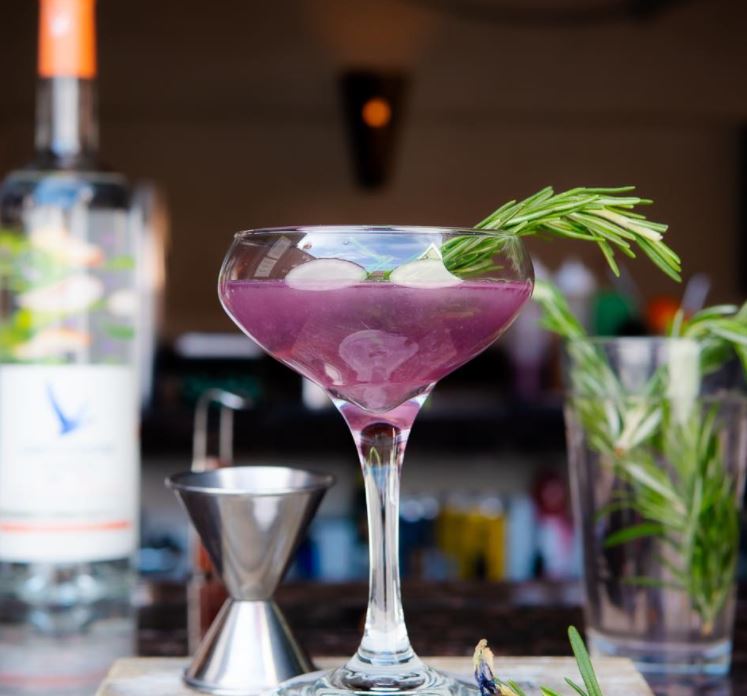
For those of you toeing the waters of the craft beer scene, you’ve probably been introduced to a wild, undulating web of strange new glasses, odd new flavors, unpronounceable beer styles, and possibly — possibly — a little unexpected snootiness. Well, here at Beer Buzz, we like to act as an educational tool for your learning experience, rather than just acting like a tool.
Periodically, we’ll explore some of the constant fixtures of the craft beer experience and explain them a little. No judgement of course. A little history. A little personal experience. Just the facts and opinions of those in the industry.
And maybe a little judgement.
Today, let’s look at one of the most obvious differences between typical bars and a craft beer bar — the frozen mug.
[pro_ad_display_adzone id=”10118″ info_text=”ADVERTISEMENT” info_text_position=”above” font_color=”#757575″ font_size=”11″ padding=”14″]
For decades, the domestic beer industry has pushed the idea of an ice-cold frozen beer mug. Maybe you remember a television commercial with a manly man pouring a cold beer into a cold mug after coming in from a hot day of doing manly man stuff, like lawn mowing or tax preparation. Or maybe a young woman grabbing cold brews and mugs from a poolside ice chest while fending off manly men trying to grab her.
Either way, the frozen mug or pint was integral to the image.
Yeah – those days are over, at least in the craft beer world.
“A frozen glass masks a good brew,” said Ian Matti, manager at craft beer bar 1702. “Do you think monks had ‘frozen’ glassware?”
Matti, a craft beer connoisseur who has bartended for nearly two decades at places such as Barrio Brewing and World of Beer, mirrors the common sentiment among all the players in the industry. Anything that takes away from the taste of beer should be a punishable offense.
But why is this? Well, there’s a number of reasons. We’ll explore just a few.
Taste. Say you have a super robust Belgian quad, filled with dense fig and raisin notes and a subtle burnt sugar finish. Sounds delightful, right? Now, let’s dump it into a frozen glass. When you take that first sip, what is the first thing that touches your lips? That frozen glass. And what comes next? A cold Belgian quad. The temperature of the glass and the now-colder beer will dull — or numb — your taste buds, preventing all the brewer’s hard work from being appreciated. Heck, it would be better if you drank the beer through a straw. (Um, don’t drink your beer through a straw.)
Carbonation. Like most things in life, beer needs to breathe. This means it must release some of the stored carbon dioxide used in the brewing process, giving the beer its aroma and reducing the filling effect of beer when ingested. The colder the beer, the less carbonation is released. If it’s released in your stomach, you feel more full and drink less beer. For shame! So using a frozen glass promotes the storage of carbonation in the beer and reduces its aroma.
Foam. Depending on the style of beer, a frozen glass will actually produce more foam due to its freezing temperature. This means more beer going down the drain and less going into you. There are two things that cause a beer to foam up — pressure and temperature. When beer is poured into a frozen glass, it reacts with the cold temperature and the ice crystals that form on the inside. This is not a good combination if you are trying to reduce foam.
Smell. Those ice crystals on the glasses don’t just cause foam, but they also absorb odors from the refrigerator. Yeah, it’s kinda like rolling your glass in that baking soda in your fridge and then pouring some beer into it. I’m sure that works for some people, but I’d rather taste the beer and not the musky smell of a three-year-old refrigeration unit.
There are more reasons. Our friends at Sentinel Peak Brewing Co. provided a great point from the brewer’s perspective:
“We don’t use chilled glasses because eventually they add more water to the beer. Granted, it’s in small amounts, but we take the consistency of body and mouthfeel of our beer very seriously and don’t want to jeopardize it with anything,” said Sentinel Peak co-founder and head brewer Jeremy Hilderbrand.
[pro_ad_display_adzone id=”10335″ info_text=”ADVERTISEMENT” info_text_position=”above” font_color=”#757575″ font_size=”11″ padding=”14″]
There are hybrid bars that offer major domestics and craft beer. Their intent is to have something for everybody. And as such, they have chilled and room temperature glassware.
At Old Chicago in Tucson, the bartenders use chilled pints for lagers, which are the world’s highest selling style of beer. Lagers are also cold-brewed and are designed to be crisp, light in body, and refreshing. Ales, however are served in room-temperature pints, basically for all the reasons given above.
“This provides an educational experience for customers,” said Old Chicago Tucson Bar Manager David Bowers.
“Our guests are rather (well-versed) in their beer knowledge,” he said. “The bartenders do often explain the differences between the chilled and non-chilled glasses and the beers that pair with them.”
So there you go. Like everything in the craft beer world, everything is up for debate. Maybe there is room for a frozen mug in your freezer. But at my house, why take up valuable ice-cream space?